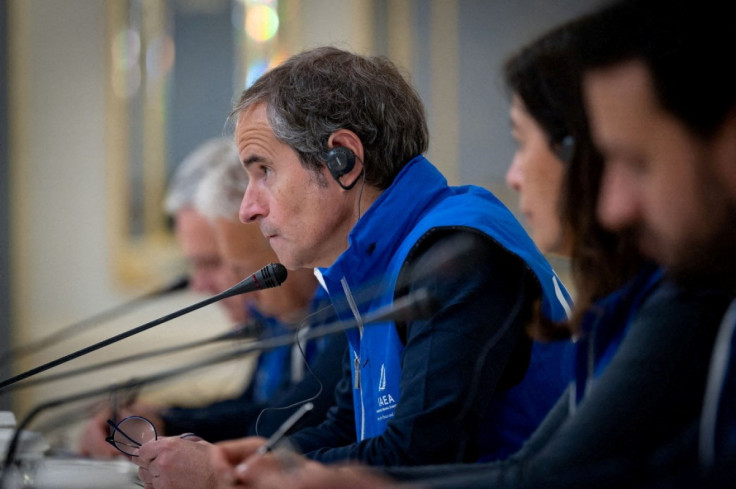UN Nuclear Chief Delays Ukraine Nuclear Plant Visit Over Security

U.N. nuclear chief Rafael Grossi delayed a trip to the Russian-held Zaporizhzhia nuclear power station on Wednesday for security reasons as Moscow and Kyiv reported heavy fighting in southern Ukraine.
Grossi had been expected to visit the plant (ZNPP) in southern Ukraine on Wednesday following talks in Kyiv on Tuesday but Ukrainian Energy Minister German Galushchenko said the trip had been pushed back, possibly by days.
"Grossi is in Ukraine. The issue of his visit to the ZNPP should be resolved in the next few days," Galushchenko was quoted as saying by Interfax Ukraine news agency.
"I cannot assess the situation - there are hostilities going on and the military is assessing the situation."
Russian news agencies, reporting early on Thursday morning, quoted a senior official in Russia's nuclear industry as saying Grossi was likely to visit the Zaporizhzhia plant on Thursday.
"We can say with a high degree of certainty that the IAEA delegation headed by Grossi will still take place on Thursday," Renat Karchaa, an adviser to the general director of Rosenergoatom, which operates Russia's nuclear stations, told Tass news agency.
There was no word late on Wednesday from Ukrainian officials.
A diplomatic source had earlier said security checks were being made and Grossi's trip was expected to take place soon. Russian news agency Interfax quoted a Russian-installed local official as saying Grossi would visit on Thursday.
Grossi, the head of the International Atomic Energy Agency (IAEA), said in Kyiv on Tuesday that he was "very concerned" that the nuclear plant could be caught up in a Ukrainian counteroffensive to retake Russian-occupied territory.
The IAEA said on Sunday it needed access to a site near the Zaporizhzhia plant to check water levels after the nearby reservoir lost much of its water because of the destruction of the Kakhovka dam downstream on the Dnipro River.
Satellite images from June 13 confirmed a sharp drop in the level of the Dnipro since the dam was destroyed.
Russian forces captured the hydroelectric dam and the nuclear plant in southern Ukraine shortly after their February 2022 invasion.
The plant uses a cooling pond to keep its six reactors from potentially disastrous overheating.
The Kakhovka reservoir was normally used to refill the pond but cannot do so now because of its falling water level, Ukrainian nuclear authorities have said.
Instead, the pond, which is separated from the reservoir, can be replenished using deep underground wells, they said.
© Copyright Thomson Reuters 2025. All rights reserved.





















